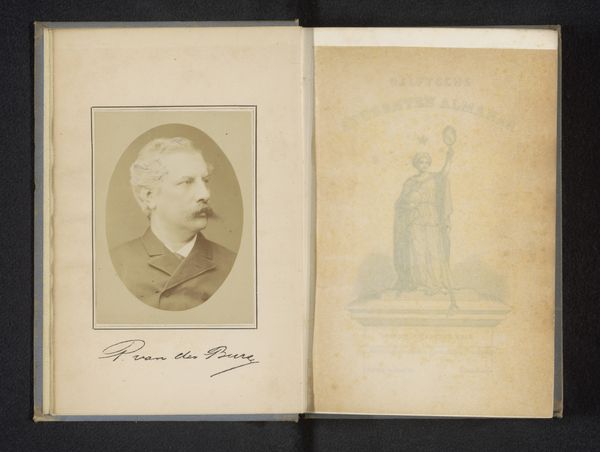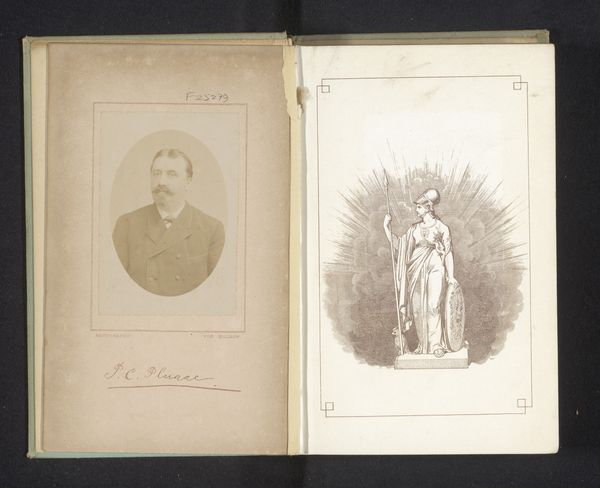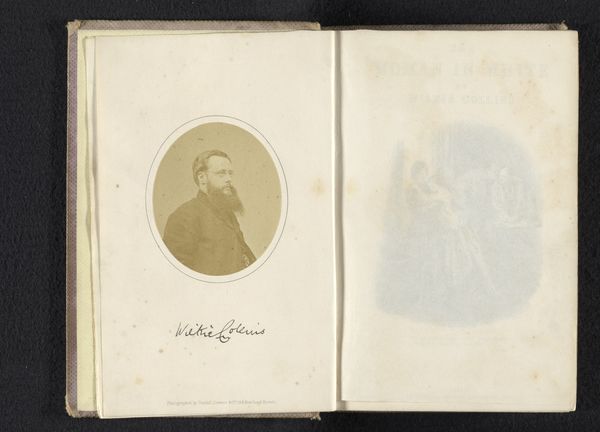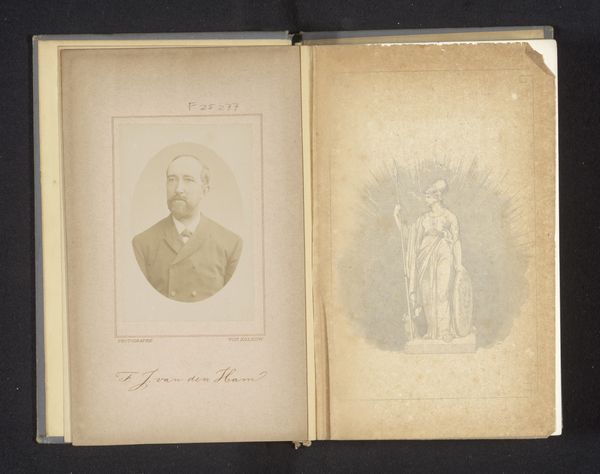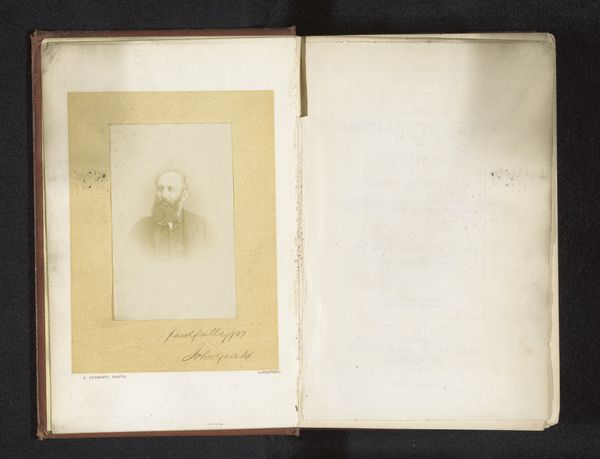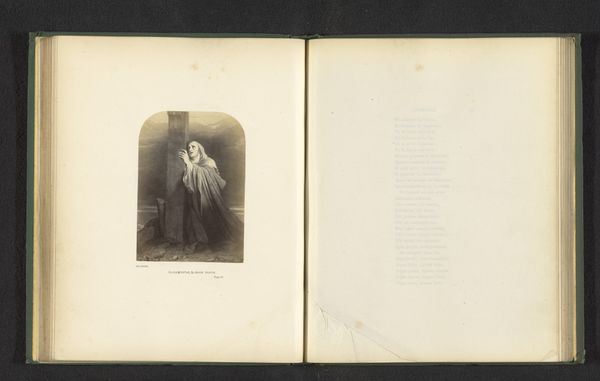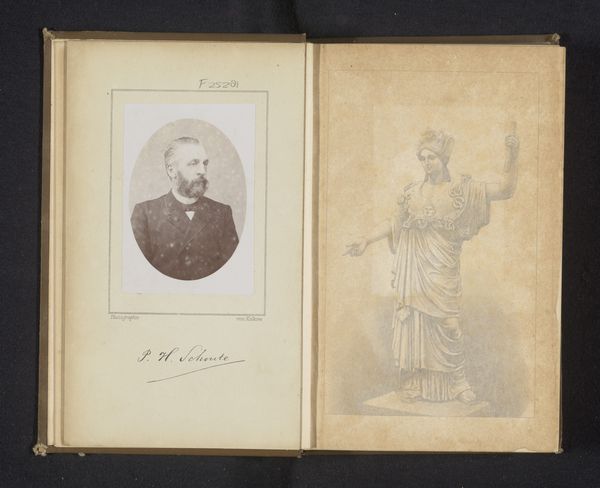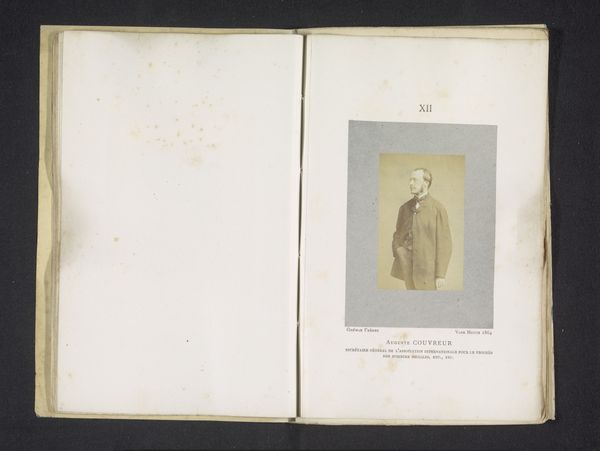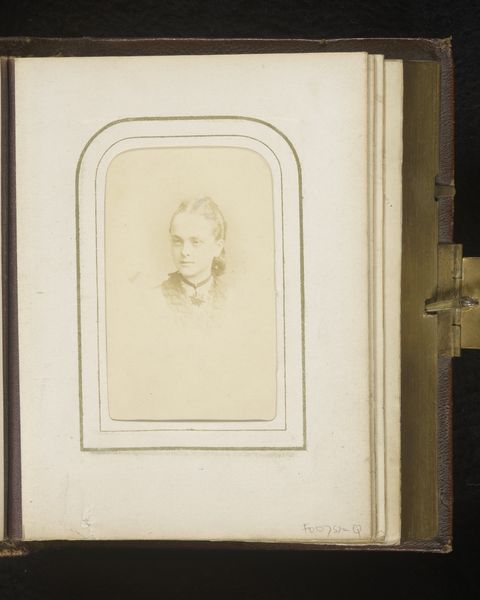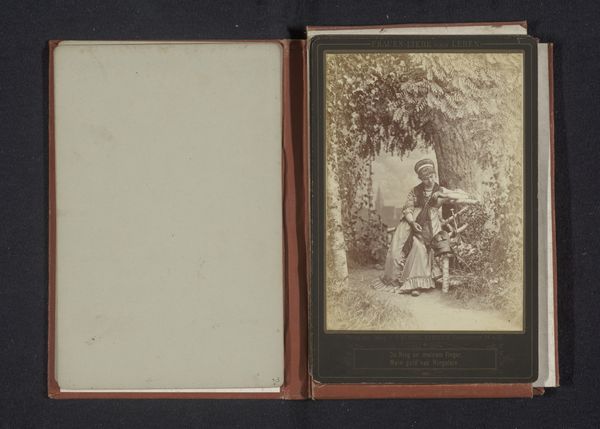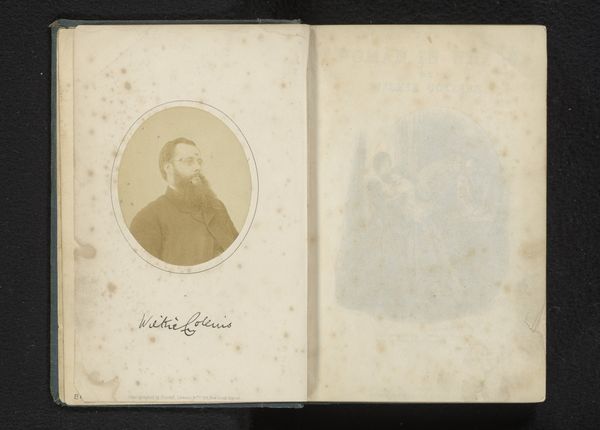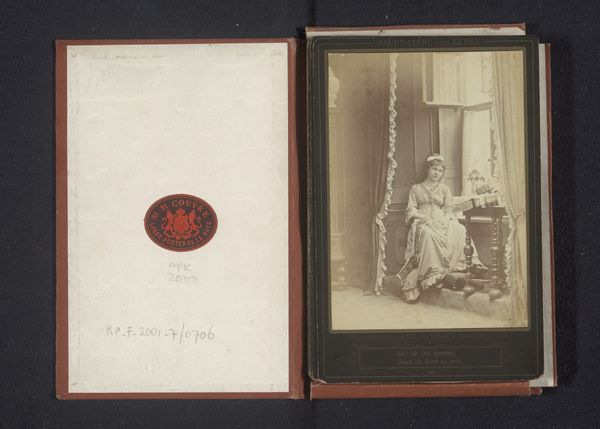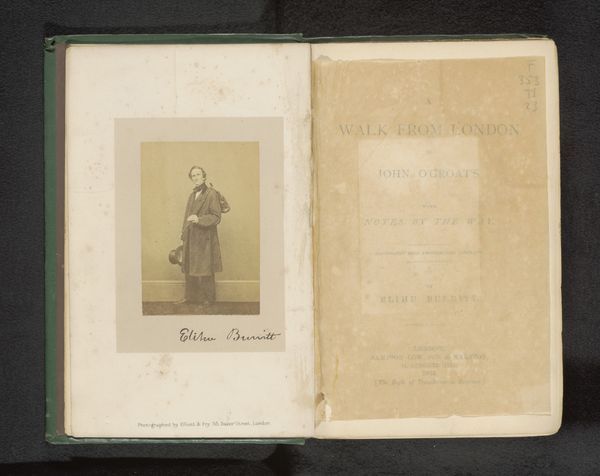
Portret van Dirk Huizinga, hoogleraar geneeskunde in Groningen en rector magnificus van 1879 tot 1880 before 1880
0:00
0:00
photography
#
portrait
#
photography
#
coloured pencil
#
academic-art
#
realism
Dimensions: height 103 mm, width 64 mm
Copyright: Rijks Museum: Open Domain
Editor: This is a photographic portrait of Dirk Huizinga, a professor of medicine, created before 1880. It’s housed in the Rijksmuseum. It has a rather somber quality; the sepia tones create a sense of formality. I am also struck by how the figure in the illustration across from the portrait seems to serve as an idealized complement to the image. What can you tell me about this image? Curator: Let us examine the composition. The photographer, Kolkow, meticulously arranged the subject and utilized light to sculpt the professor's features. Note the precision of line, particularly in the beard and jacket. The photographic print is attached to a buff colored card which has another light sketch facing it. Do you think that it’s relevant, despite the seeming difference in quality between the illustration and the photographic print? Editor: I suppose the sketch acts like a commentary on the formal portraiture tradition – contrasting an austere, realist image with something a bit more idealistic and artistic. It might highlight how portraiture, even photography, always involves choices about representation. Curator: Precisely. It questions the assumed objectivity of photography by placing it alongside a much more imaginative counterpart. Consider the oval frame surrounding Huizinga’s image; how does it influence our reading? Editor: It really boxes the subject in – makes it very static. A bit like a specimen maybe? In contrast, the light sketch makes the adjacent space feel more ethereal. The illustration seems to embody a sort of intellectual muse for the portrait. Curator: It's an astute observation to note the contrast between the confines of the framed photograph and the atmospheric openness of the sketch, revealing not just artistic skill, but also symbolic intention through juxtaposed form. This duality provides fertile ground for interpretation, doesn't it? Editor: I agree. I didn't see the tension created by the contrast between photograph and sketch before. Thanks for your insights.
Comments
No comments
Be the first to comment and join the conversation on the ultimate creative platform.
